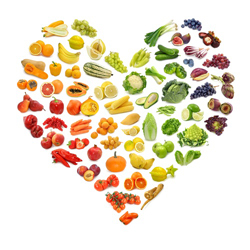SuperFoods for Kids

By: Tara Weng
I started down on the right path with my newborn son (my first) making homemade baby food and really watching what he ate…until about the age of two. Now home with an 11 and 7-year old I’ve clearly fallen off the nutritional wagon. In a quest to get my house back on the right path I consulted two nutrition experts for their thoughts on “superfoods” (read healthier than chicken nuggets) for kids.
Clinical nutritionist Amy Gardner says there are there are certain key elements in developing the healthy patterns your kids need. “The first is modeling healthy eating; kids eat what they see parents eat. The second is exposure. It can take 15-20 exposures before a toddler accepts a new food. Parents often give up if a child doesn’t like a food the first few times it’s offered, which is a mistake. It’s important to continue offering the food in order to encourage exploration and build up some familiarity with foods you want your child to eat,” she recommends. Gardner also strongly urges parents to remember that while it is their responsibility to shop for and cook healthy foods it is really the child’s job to learn how much and when to eat.
Registered Dietician Kate Scarlata cautions that most kids and parents fall short in the fruit and veggie department, really the ultimate in superfoods. “Every meal should have at least one fruit or veggie if not two or more,” she advises. Scarlata goes on to explain the value of these foods. “Brightly colored produce provides a variety of antioxidants which reduce risk of disease and help keep the immune system strong. Foods rich in the Vitamin C, Vitamin A (carotenoids), Zinc and Selenium offer a great nutrition punch while working at keeping the immune system resilient. Vitamin C rich foods: berries, broccoli, kale, kiwi, strawberries and of course oranges and orange juice,” she says, to name a few.
Both Gardner and Scarlata agree that when it comes to superfoods the more color the better. “Foods deeply colored such as blueberries, pomegranates, blackberries, red cabbage, spinach, kale, swiss chard and other greens have high oxygen radical absorbance capability (ORAC) scores: meaning they are able to scavenge free radicals, preventing oxidative damage,” Gardner explains.
While this information is certainly helpful it also begs the question: How can we get these foods into their mouths? I’m thinking the old-fashioned quarterback sneak is in order. Scarlata says simply “mix it up.” She found as a mother that presenting what seems like un-fun foods in fun ways can do the trick.
Here are some of her favorite superfood recipes: “Fruit smoothies are a great way to squeeze a variety of fruits into the diet: simple blend about a cup of frozen unsweetened fruit and a 1/2 cup of Greek yogurt and 1/2 cup of juice in a blender for a antioxidant rich treat. My kids LOVE kale chips which are easy to prepare and a fun way to nosh this superfood. Simply drizzle olive oil over bite size pieces of kale, sprinkle with sea salt and bake at 325 for about 15 minutes or until the kale feels almost like tissue paper,” she offers.
Amy Gardner also has additional recipes and nutritional information on her web site: metrowestnutrition.com.
I will try my best to cut down on the chicken nuggets and chips and try to make these superfoods more regular staples in my house. If I can sell Kale in chip form I will be making tons of progress.
RELATED: Uninvited Party Guests: Should You Pay?
RELATED: 3 Tips for Avoiding ‘Mommy Eating Traps’




